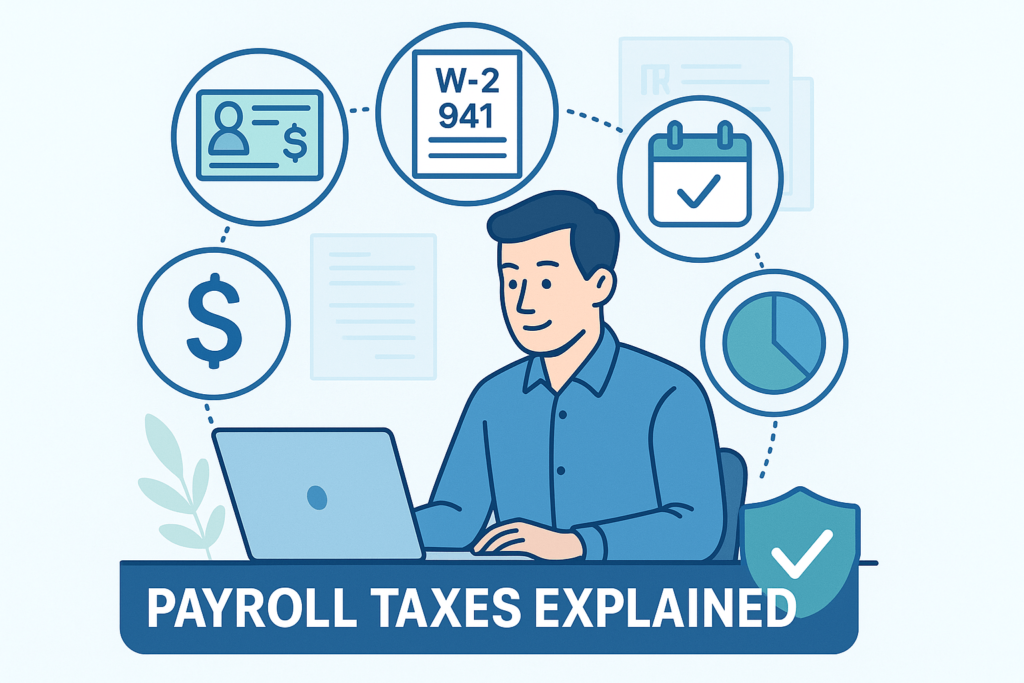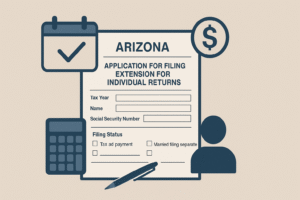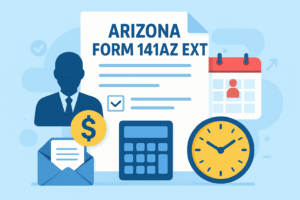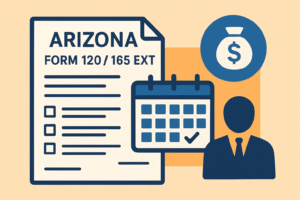Understanding payroll taxes is essential for any business that employs workers. It’s not just about paying your team, It’s also about fulfilling legal obligations to federal and state governments. From calculating withholdings to distinguishing payroll taxes from income taxes, this guide covers everything you need to stay compliant and informed.
What Are Payroll Taxes?
Payroll taxes are taxes imposed on employers and employees based on wages or salaries paid. These taxes are used to fund government programs like Social Security, Medicare, and unemployment insurance. Some payroll taxes are withheld from employees’ paychecks, while others are paid directly by the employer.
These taxes typically fall into two categories:
- FICA taxes (Federal Insurance Contributions Act): Includes Social Security and Medicare.
- Unemployment taxes: Such as FUTA (federal) and SUTA (state).
💡 Quick Tip: Employers are required to match the employee’s contribution for Social Security and Medicare don’t forget to include your share when budgeting for payroll.
Payroll Tax vs. Income Tax
Though they’re often confused, payroll tax and income tax are not the same.
| Feature | Payroll Tax | Income Tax |
| Who Pays | Both employer and employee (depending on the tax) | Primarily the employee |
| Based On | Gross wages or salary | Income, with adjustments for deductions and credits |
| Used For | Specific programs like Social Security, Medicare, unemployment | General federal/state revenue |
| Withholding | Automatically withheld from each paycheck | Withheld based on IRS Form W-4 |
In short: Payroll taxes fund benefits; income taxes fund government operations.
What Are Wage Limits for Payroll Tax?
Wage limits refer to the maximum amount of income that is subject to certain payroll taxes. These limits can change yearly and differ based on the type of tax:
- Social Security Tax (2025 limit): Applies only to the first $168,600 of an employee’s wages.
- Medicare Tax: No wage limit. All covered wages are taxed, with an additional 0.9% on wages over $200,000 (single) or $250,000 (married filing jointly).
- FUTA Tax (Federal Unemployment): Applies to the first $7,000 of each employee’s wages.
- SUTA Wage Base: Varies by state. For example, California’s wage base is $7,000, while New York’s is $12,500.
📌 Quick Tip: Wage limits are updated annually. Be sure to check new limits at the beginning of each calendar year to stay compliant.
How Much Is Payroll Tax?
Payroll tax rates depend on the tax type:
| Tax | Rate | Who Pays |
| Social Security | 6.2% | Both employer and employee |
| Medicare | 1.45% | Both employer and employee |
| Additional Medicare | 0.9% | Employee only (if applicable) |
| FUTA | 6.0% (reduced by credits) | Employer only |
| SUTA | Varies by state | Employer only (in most cases) |
Employers typically match 7.65% of each employee’s wages for Social Security and Medicare.
Which Payroll Taxes Are Paid by Employers?
Employers are responsible for:
- Their share of FICA taxes (Social Security and Medicare).
- Federal Unemployment Tax (FUTA).
- State Unemployment Tax (SUTA).
- Withholding and remitting employee portions of FICA and income taxes.
✅ Quick Tip: Consider using payroll software or a third-party provider to simplify tax compliance and reduce manual errors.
How to Calculate Federal Payroll Tax Withholdings
To calculate withholdings, you need:
- Employee’s Form W-4
- Current IRS tax tables
- Employee’s gross wages
Steps:
- Determine gross pay: For example, 40 hours × $25/hour = $1,000.
- Calculate Social Security: $1,000 × 6.2% = $62.
- Calculate Medicare: $1,000 × 1.45% = $14.50.
- Determine federal income tax: Use IRS Publication 15-T and W-4 data.
- Include any additional deductions or withholdings (e.g., health insurance, state tax).
A Payroll Tax Withholding Example
Let’s say Sarah earns $1,000/week in wages.
| Tax Type | Rate | Amount Withheld |
| Social Security | 6.2% | $62.00 |
| Medicare | 1.45% | $14.50 |
| Federal Income Tax | Based on W-4 | $80.00 (example) |
| Total Withheld from Employee | $156.50 |
The employer must also contribute $62 for Social Security and $14.50 for Medicare — plus any required unemployment taxes.
What Else Do Employers Need to Do?
In addition to withholding and depositing payroll taxes, employers are responsible for:
- Filing federal forms:
- Filing state payroll tax reports, depending on your state’s requirements.
- Keeping payroll records for at least four years.
- Making timely deposits using the Electronic Federal Tax Payment System (EFTPS).
📁 Quick Tip: Create a checklist of payroll tasks for each pay period, month, quarter, and year to avoid missing deadlines or filings.
Final Thoughts
Payroll taxes may feel overwhelming, especially for small businesses, but understanding the core responsibilities can save you from penalties and headaches. By staying on top of wage limits, knowing who pays what, and using the right tools or professionals, employers can run payroll smoothly and stay in compliance







